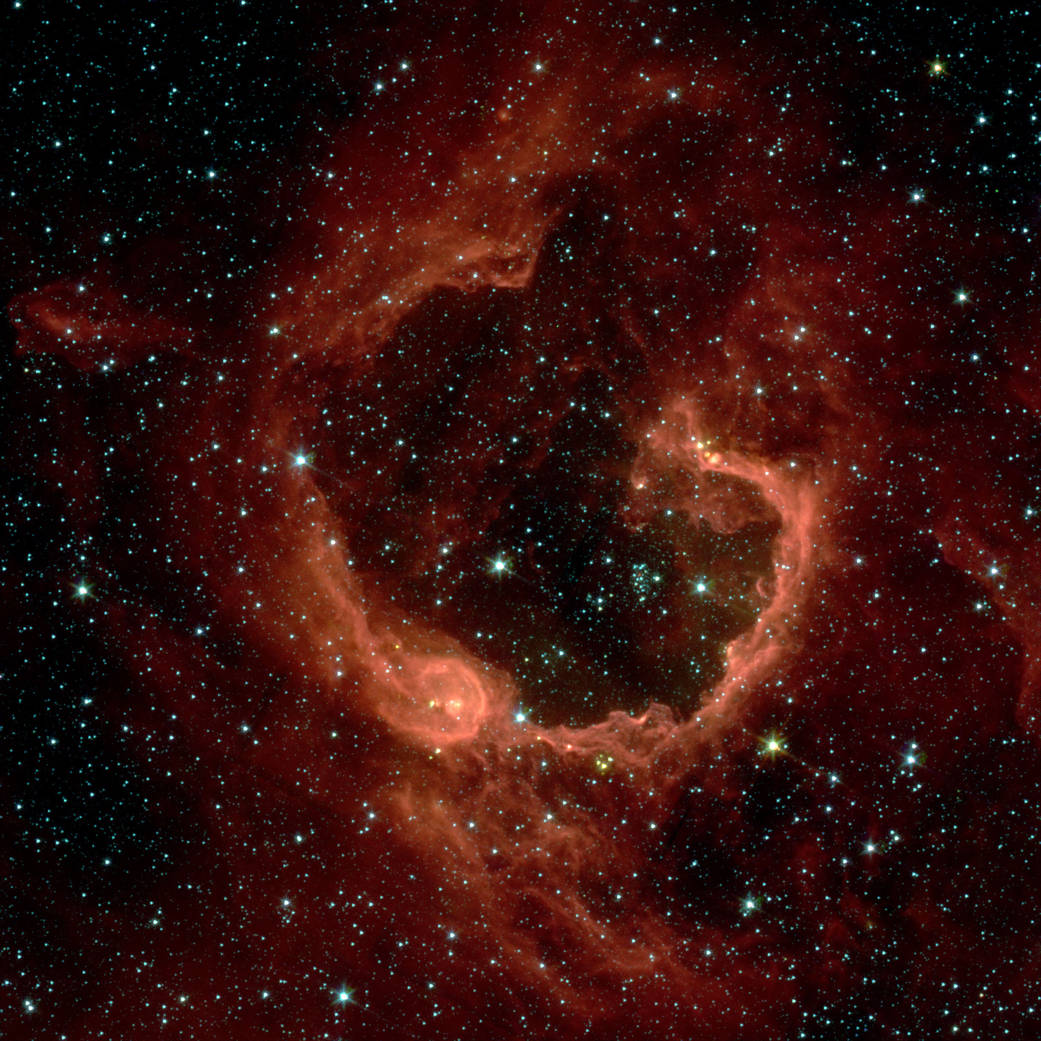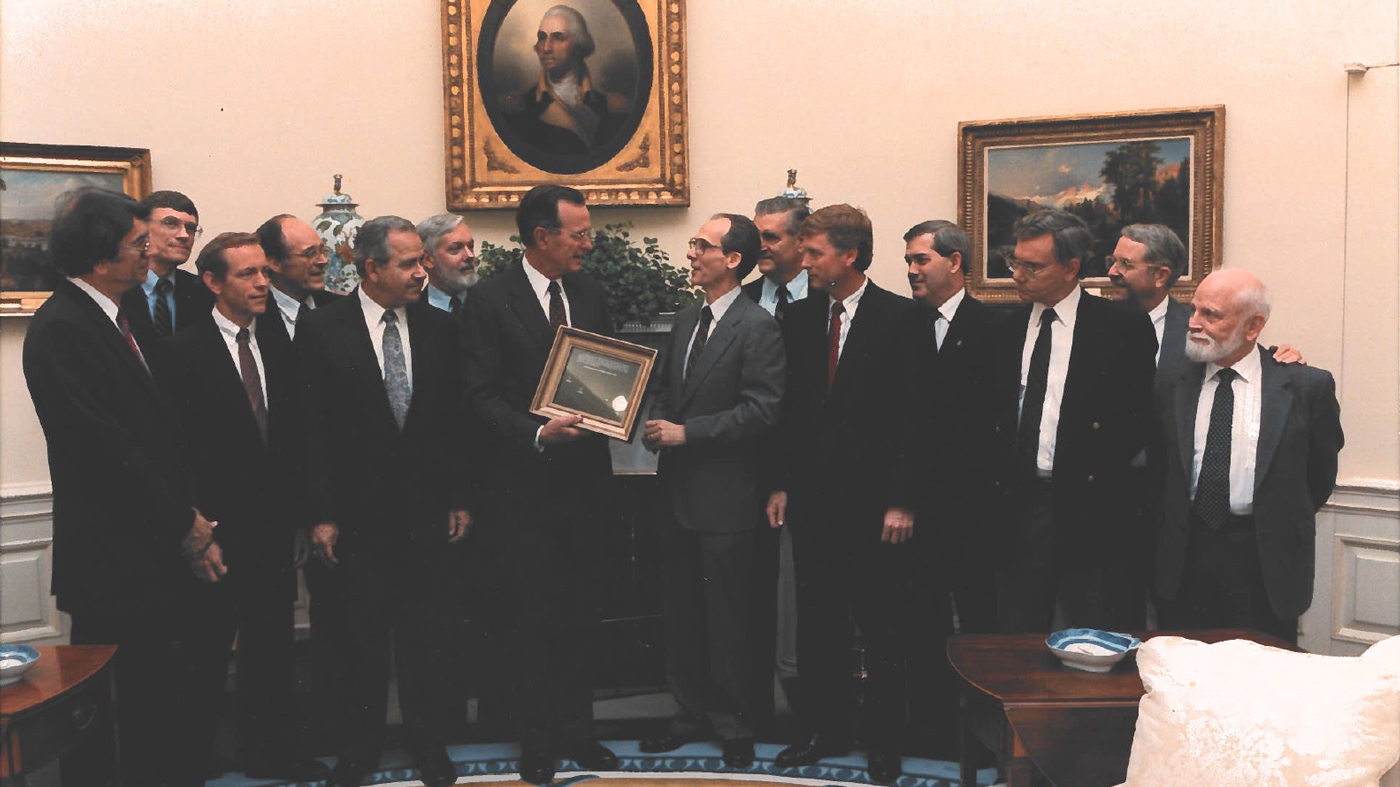
This bubble of ionized gas and warm dust, called RCW 79, lies in the southern Milky Way, 17,200 light years from Earth in the constellation Centaurus, and probably took about one million years to form from the radiation and winds of hot young stars. The infrared eyes of NASA’s Spitzer Space Telescope have found at least three generations of stars forming in this expanding envelope.
The gas and dust balloon is an example of stimulated star formation. Such stars are born when the hot bubble expands into the interstellar gas and dust around it. RCW 79 has spawned at least two groups of new stars along the edge of the large bubble. Some are visible inside the small bubble in the lower left corner. Another group of baby stars appears near the opening at the top.
NASA’s Spitzer Space Telescope detects infrared light from the dust particles in RCW 79. Ultraviolet light from the young stars excites the dust particles, causing them to shine in infrared. Spitzer detects this infrared light, seen here as the extended red features.Image Credit: NASA/JPL-Caltech/E. Churchwell (University of Wisconsin)


























